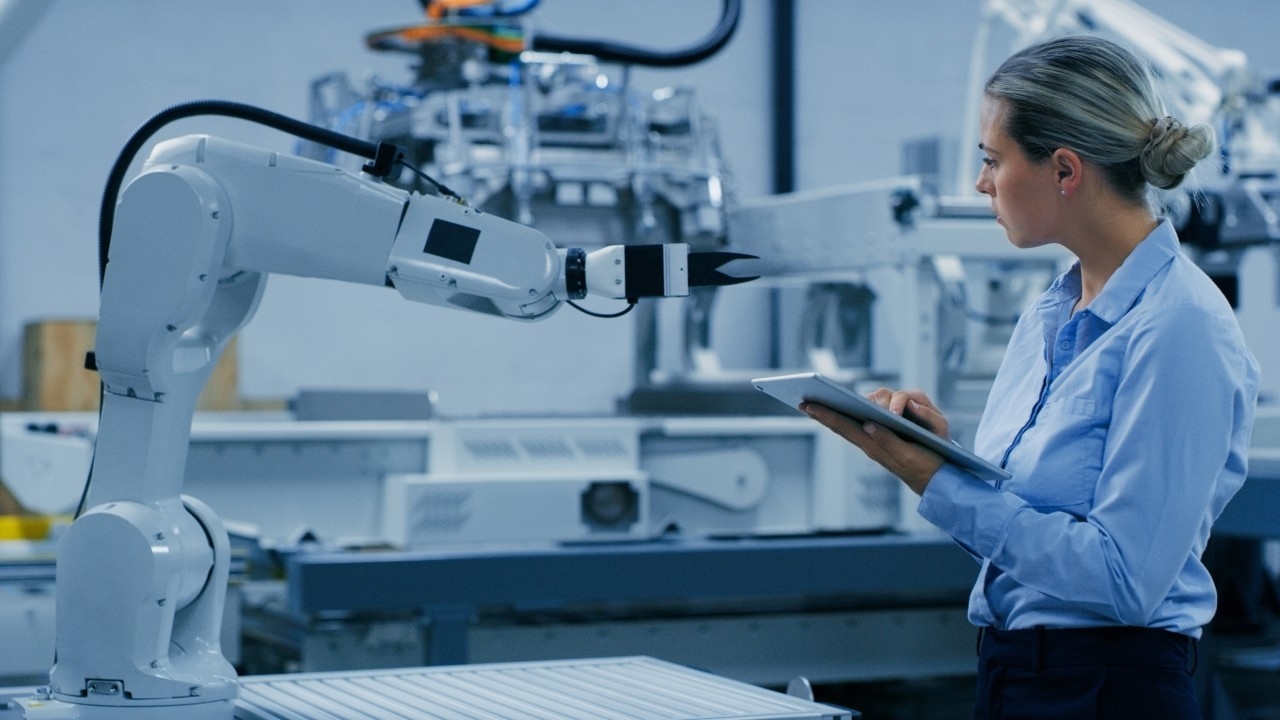Walking into the Microsoft Innovation Lab in Houston, Texas, was like stepping into the future state of planet Earth.
My takeaway? The future looks promising.
One of the first things I experienced was the manufacturing and industrial IoT corner where we explored emerging technology’s profound impact on creating efficiencies in upstream, midstream, and downstream supply chains. Then came a peak into a more sustainable future and the role of carbon-free energy made possible by Microsoft’s collaboration and $5 billion investment in Terra Praxis, a nonprofit focused on reversing climate change. Looking like a rook on a chessboard with shiny silver bolts and a sturdy, blue-gray frame, a robot demonstrated Microsoft Azure’s role in connecting data at the edge with valuable insights.
The invitation to attend Microsoft’s Industrial AI and Metaverse Day presented me with many what-if possibilities, products, and technologies. All of it framed out our future – particularly in the area of manufacturing.
Metaverse: a Physical and Digital Fusion for Makers
According to the U.S. Bureau of Labor Statistics, workplace deaths were up 5.7% in 2022 from the previous year and workplace injuries were up 7.5%. Can technology shift these numbers for the better? Is it possible for modeling and simulation to improve safety while connecting manufacturers with mission critical insight? Would a more immersive approach simplify large data sets and better predict outcomes to simulated approaches?
Microsoft views the industrial metaverse as an opportunity to look at traditional manufacturing in new and different ways. One distinction, however, is that they do not view this in isolation. On our tour, there were demos of industrial line scenarios from partners and customers. Our guide Josh Stevenson called “Experience X, and this information is shared across more than 40 Microsoft Technology Centers around the world. While Microsoft is often tapped for its manufacturing prospect, our guides said “we speak through the partner and customer ecosystem.”
Microsoft Thinks Like a Start-Up
The crossroad of technology and humanity is where true growth thrives. Artificial Intelligence (AI) is based on everything that has already happened; it curates amazing insights and supports decision-making. People, however, are architects of the future. The Microsoft Technology Center was all about having the right tools.
In contrast with my morning tour of Microsoft’s Innovation Lab, the Microsoft Technology Center showed me the roadmap to where we need to go: manufacturing with greater safety, precision, accuracy, consistency and repetitive quality.
Our tools will be network and cloud infrastructure, database management, and Internet of Things (IoT) solutions for remote monitoring in real-time. Security is top of mind for everyone. Microsoft and OpenAI, a company that Microsoft has invested in, are focused on artificial general intelligence that benefits humanity.
To this point, my wish finally came true when I demoed Microsoft Copilot, defined as an “everyday AI companion.” I asked Copilot to summarize and prioritize my emails. It did, saving me precious time.
The day finished with dinner. Sitting around the table were Microsoft executives, customers and other subject matter experts. To be honest, I would normally be ready to go back to my hotel after a packed day of exploring, sharing and learning. Yet, I felt the exact opposite – and it was because of the energy of those around me. I’ve worked with Microsoft in some capacity throughout my career. I’ve seen it go from a competitive to a collaborative culture where innovation, confidence and trust thrive. Microsoft rediscovered its startup spirit, which is essential for a company that wants to work at the speed of innovation using industrial AI and metaverse.
Smart Manufacturing Fills Gaps
There is a myth that AI will replace humans. Throughout time, technology has rendered some roles impractical, however, technology has also opened up avenues for innovative, creative thinking about what comes next. The Manufacturing Institute predicts there will be 2.1 million unfilled manufacturing jobs by 2030. The cost of this labor gap could reach $1 trillion – just in 2030 alone.
AI and metaverse is one viable solution.
If you’re sitting there wondering how to finance such technology, you might be surprised to discover the first step is free.
Get educated on what metaverse and AI can and cannot do.
Rather than deploying new technology, consider its business value in different areas.
Use the 3 A’s to guide you: assess (strengths and challenges of today), align (between objectives and budget and resources) and adjust (strategy and operations)
Consider collaboration with suppliers or industry partners – leverage rather than rebuild.
Explore opportunities for a shared manufacturing of excellence.
On this last point, think Airbnb. What if manufacturers were game to rent rather than own so they could pool resources, benefitting a vast majority of them? According to SCORE, “98.6% of all manufacturing companies in the United States are small businesses and the majority of them have fewer than 20 employees.” Imagine if ten companies with similar infrastructure and machinery required only one highly trained person to maintain or fix a certain type of equipment.
Continuous innovation is a pathway to the future state for manufacturing. History teaches us it will take courage, collaboration, and a startup spirit to get there – plus a boundless sense of curiosity.
What if the future of manufacturing could equip humans with superpowers beyond their imagination?
What if we could scale our goals faster and with more precision?
What if we could make factories of the future safer and more sustainable?
On the other side of every question is an opportunity. This is where the crossroad of humanity and technology inspires exciting outcomes for all of us.



Leave your comments
Post comment as a guest